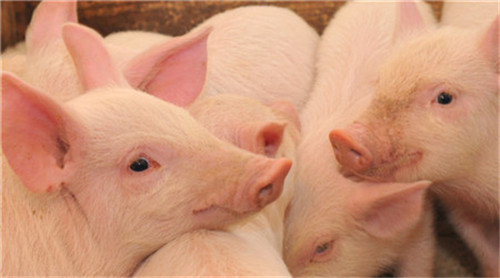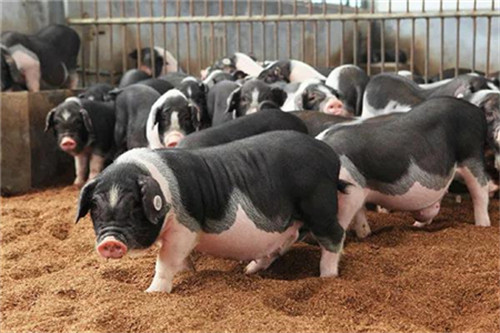Actual combat: there is a way to treat asthma!
The pig suffered from respiratory disease with severe abdominal breathing and coughing. The use of a variety of florfenicol, tilmicosin, tylosin and other anti-inflammatory drugs always rebound, traditional Chinese medicine is also used, always ineffective. The serious ones also die, and the immortal gradually become stiff pigs. This problem has perplexed many farmers. If I tell you a little trick, you can dial a thousand pounds four or two.
The pig developed fever, asthma and cough. Shuanghuanglian plus florfenicol intramuscular injection can be selected, and lincomycin intramuscular injection can be used on the other side. Once a day for two days.
Pigs have severe abdominal breathing, but do not have a fever. Then choose lincomycin and dexamethasone. The other side was injected intramuscularly with aminophylline. Once in the morning and once in the afternoon, the effect is also very good.
Why do you use the medicine like this?
1. If you have a fever from a respiratory disease and breathe through the abdomen
Using Shuanghuanglian to clear heat, detoxify and reduce fever, florfenicol anti-inflammation is the first choice for the treatment of respiratory diseases (tilmicosin, tylosin is also possible). The combination of Shuanghuanglian and florfenicol can cure both the symptoms and the root causes.
In addition, Shuanghuanglian has an antiviral effect. If it is a viral disease, it can also be treated at the same time. Shuanghuanglian can also gently reduce fever, unlike aminopyrine and other compulsory antipyretic drugs, sometimes due to a sudden drop in temperature and shock.

2. If abdominal breathing occurs, but no fever occurs
In general, the condition of pigs has become a chronic disease, and sometimes even a critical condition. At this time, it is not appropriate to choose effective drugs such as florfenicol and tilmicosin. Because of its toxic side effects, if the pig can not afford it, it will die after the injection.
Lincomycin, a mild sensitive antibiotic, is added with a little dexamethasone to prevent shock. On the other side, aminophylline was used to relieve asthma. This can cure both the symptoms and the root causes.
Because the efficacy of dexamethasone and aminophylline is relatively short, it must be done in the morning and afternoon. In addition, you can not scratch the ear when injecting, so as to avoid death after injection due to stress.
Aminophylline
If you only take antibiotics instead of aminophylline to relieve asthma, the therapeutic effect is not good. This is why a variety of antibiotics are used and cannot be effectively controlled.
However, aminophylline is highly toxic and the dose must be strictly controlled. Do not overuse it. Generally, 30 jin of pig people use aminophylline one at a time is enough.
In addition, abdominal breathing caused by fever is not appropriate. Because aminophylline has the effect of raising blood pressure, the temperature will not go down. In the treatment must be continuous medication, generally used for 2 to 3 days, until the pig's breathing is normal. The effect of aminophylline is to relieve spasms caused by respiratory diseases so that they can breathe normally.
Dexamethasone
In addition, the application of dexamethasone is very important. Dexamethasone is a hormone drug that can effectively absorb inflammatory secretions from respiratory diseases in the treatment of abdominal breathing. Keep the pig's respiratory tract open. The dose of dexamethasone should be gradually reduced so that the pig's abdominal breathing will not rebound. The use of antibiotics remains at the original dose until the inflammation completely disappears.
When we relieved the symptoms of shortness of breath in pigs, according to the actual situation, we stopped using injections, added 115 yuan respiratory set mixture to the feed, and recuperated with Chinese and Western medicine to prevent the rebound of respiratory diseases.
Related
- On the eggshell is a badge full of pride. British Poultry Egg Market and Consumer observation
- British study: 72% of Britons are willing to buy native eggs raised by insects
- Guidelines for friendly egg production revised the increase of space in chicken sheds can not be forced to change feathers and lay eggs.
- Risk of delay in customs clearance Australia suspends lobster exports to China
- Pig semen-the Vector of virus Transmission (4)
- Pig semen-the Vector of virus Transmission (3)
- Five common causes of difficult control of classical swine fever in clinic and their countermeasures
- Foot-and-mouth disease is the most effective way to prevent it!
- PED is the number one killer of piglets and has to be guarded against in autumn and winter.
- What is "yellow fat pig"? Have you ever heard the pig collector talk about "yellow fat pig"?



